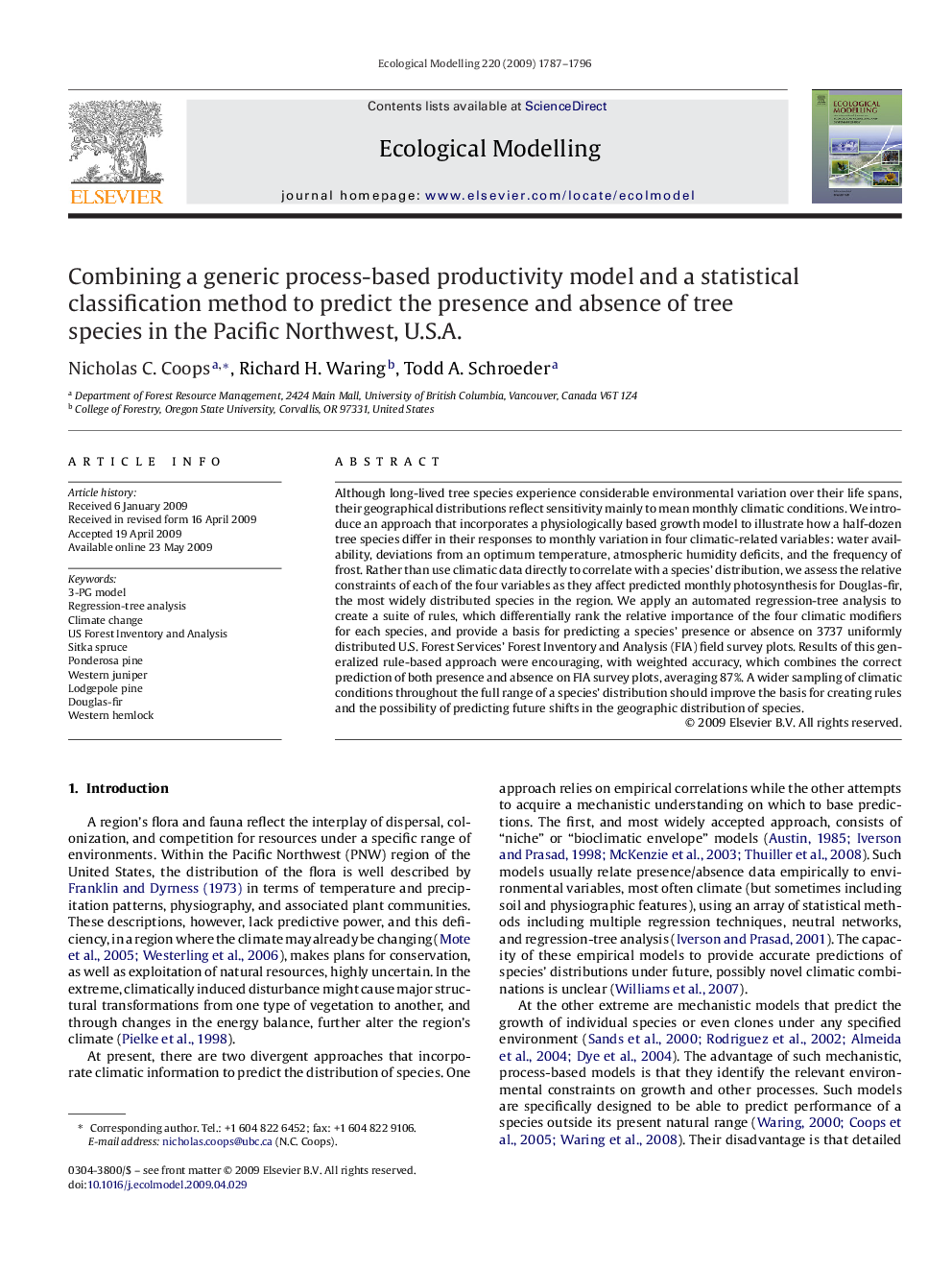| کد مقاله | کد نشریه | سال انتشار | مقاله انگلیسی | نسخه تمام متن |
|---|---|---|---|---|
| 4377954 | 1303455 | 2009 | 10 صفحه PDF | دانلود رایگان |

Although long-lived tree species experience considerable environmental variation over their life spans, their geographical distributions reflect sensitivity mainly to mean monthly climatic conditions. We introduce an approach that incorporates a physiologically based growth model to illustrate how a half-dozen tree species differ in their responses to monthly variation in four climatic-related variables: water availability, deviations from an optimum temperature, atmospheric humidity deficits, and the frequency of frost. Rather than use climatic data directly to correlate with a species’ distribution, we assess the relative constraints of each of the four variables as they affect predicted monthly photosynthesis for Douglas-fir, the most widely distributed species in the region. We apply an automated regression-tree analysis to create a suite of rules, which differentially rank the relative importance of the four climatic modifiers for each species, and provide a basis for predicting a species’ presence or absence on 3737 uniformly distributed U.S. Forest Services’ Forest Inventory and Analysis (FIA) field survey plots. Results of this generalized rule-based approach were encouraging, with weighted accuracy, which combines the correct prediction of both presence and absence on FIA survey plots, averaging 87%. A wider sampling of climatic conditions throughout the full range of a species’ distribution should improve the basis for creating rules and the possibility of predicting future shifts in the geographic distribution of species.
Journal: Ecological Modelling - Volume 220, Issue 15, 10 August 2009, Pages 1787–1796